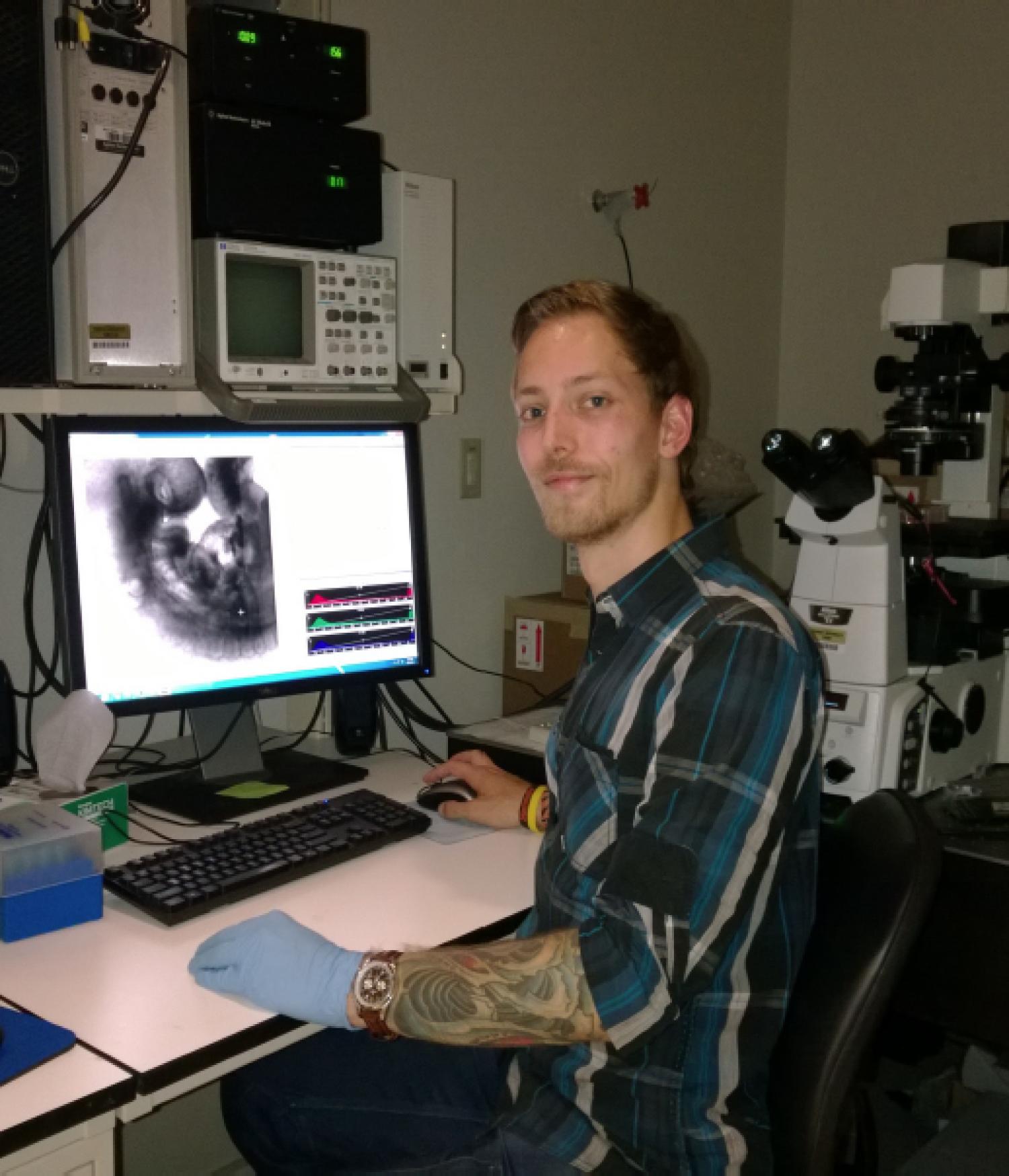Benjamin Seelbinder
Focus Area: Cell and Nuclear Mechanobiology - Corey Neu Group
Science and nature fascinated me from an early age and my first lab experience reassured me that I wanted to be involved in biologic research. As a part of my first project, I collected data for my bachelor thesis in a startup company, where I tested the potential of cell cycle inhibitors as cancer drugs.
At the beginning of my graduate studies, I was convinced to go into neurobiology to elucidate the secrets of the brain. However, after finishing my master thesis at the German Center for Neurodegenerative Diseases, I decided that I wanted to get involved in a less congested and more innovative and novel field of research. Such an opportunity was found when Professor Corey Neu invited me to join his lab as a PhD student in the intriguing, interdisciplinary field of mechanobiology that combines aspects of mechanical engineering with molecular and cell biology.
Mechanobiology studies the machine inside living things, abstracting cells as mechanical entities with physical properties. An important part of mechanobiology is the ability of cells to sense and react to their mechanical environment, known as mechanosensation. It is important in many crucial biological processes, like development, tissue maintenance and tissue adaptation. Stem cells, for example, decide their fate based on their surroundings, becoming a bone cell in stiff or a brain cell in soft environments.
Similarly, after injuries or during exercise cells pick up on mechanical cues and send out repair or growth signals to synthesize new matrix or adapt to new demands. The importance of mechanosensation becomes apparent when it is compromised like in patient with genetic defects. Manifestation can be very severe ranging from rapid systemic aging to hypertrophic bone regeneration that result in deformations and restrictive motility. Mechanosensation also plays a role in more common diseases like cancer, cardiovascular diseases and new insights could advance engineering of tissue replacements.
My research focus lies in the subfield of nuclear mechanosensation. The cell nucleus is known to contain, maintain and interpret the genomic information that forms the bases of every individual. Despite that, it experiences an enormous amount of deformation in everyday tasks, especially in mechanically challenged tissues like the heart, muscles, skin and tendons.
It is unclear how the nucleus protects the integrity of the genome and maintains its highly structured organization that is necessary for proper gene decryption during such events. Even more, the tight interconnection of the nucleus through the cytoskeleton results in elevated strain forwarding and suggests an active role of the nucleus in mechanosensation. Hypothesis reach as far as postulating the nucleus as a master-regulator that integrates all mechanical cues and orchestrates a cell response accordingly. To this date, it is unclear if and to what extend the nucleus is involved in mechanosensation and what the underlying mechanisms of sensing and processing mechanical cues are. Solving these questions will open a new perspective on curing disease, engineering tissue replacements and mechanosensation as a whole.


